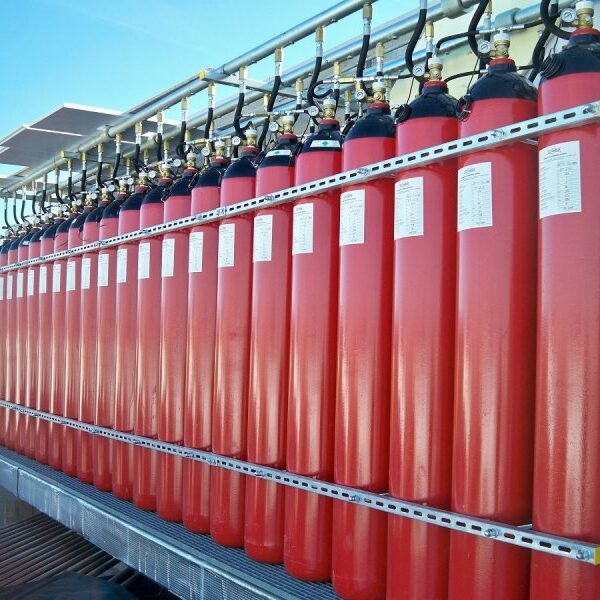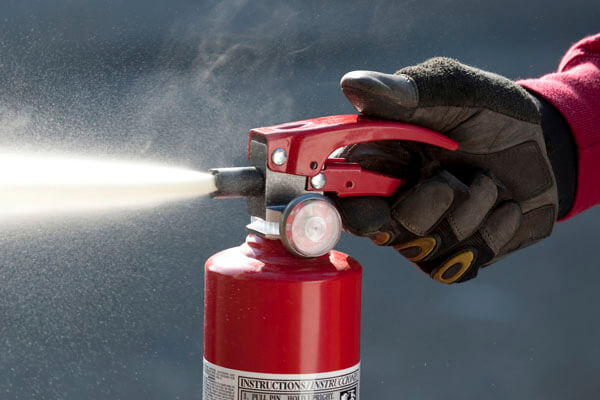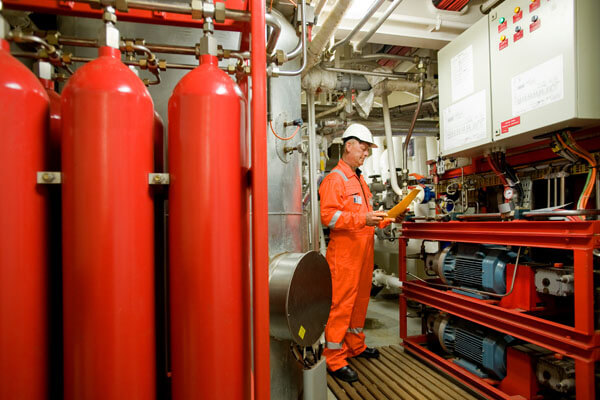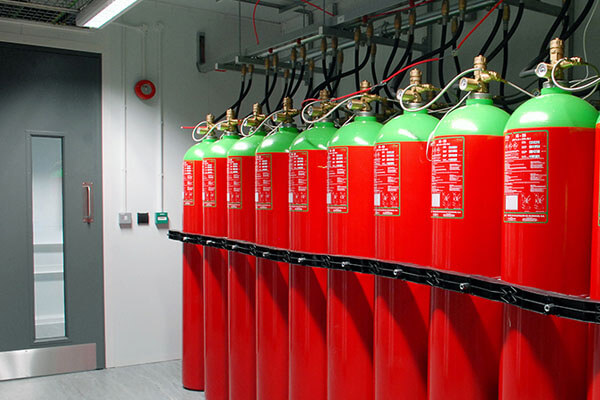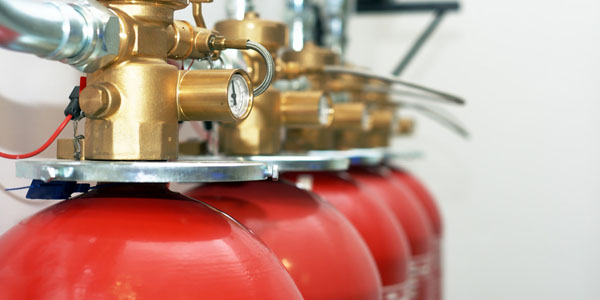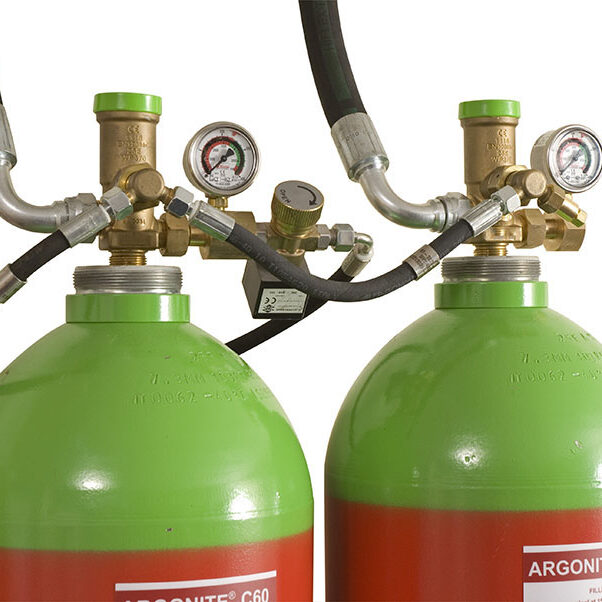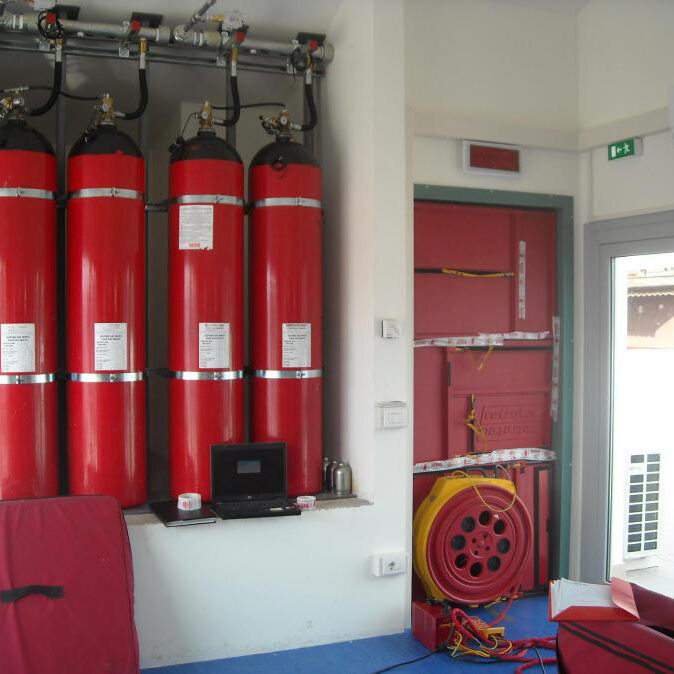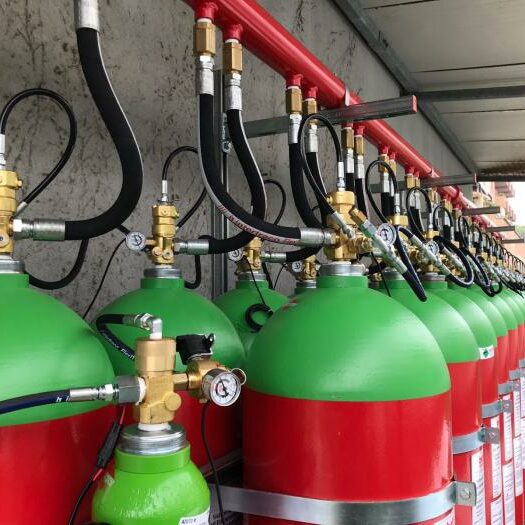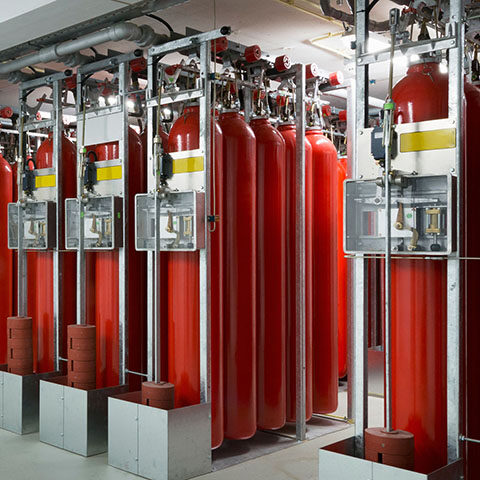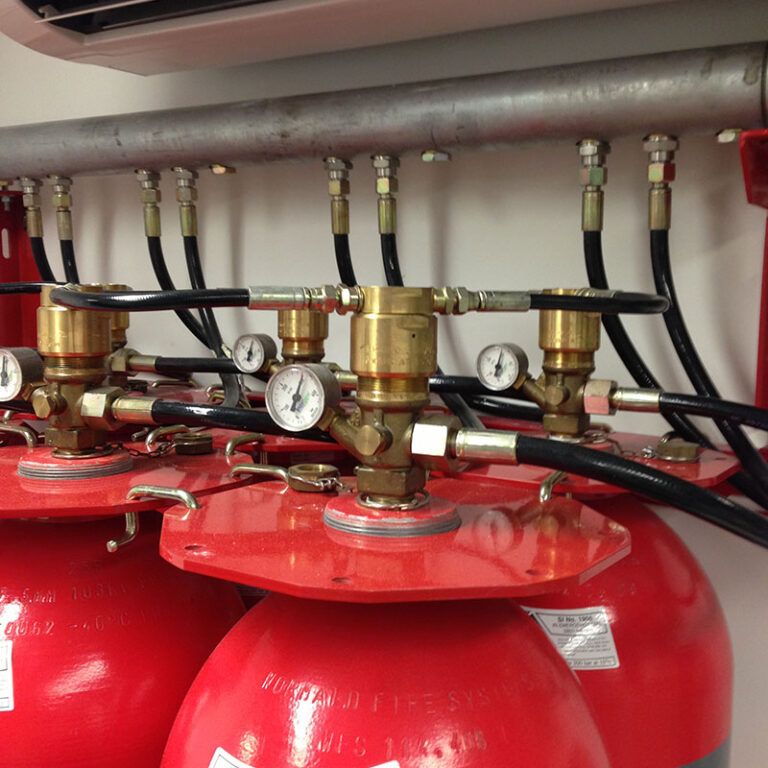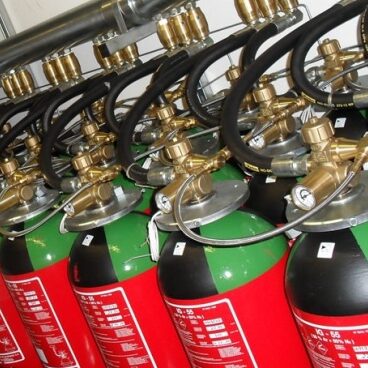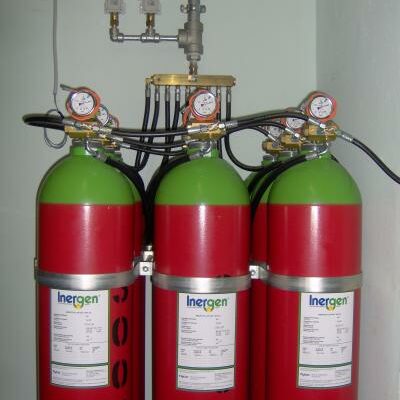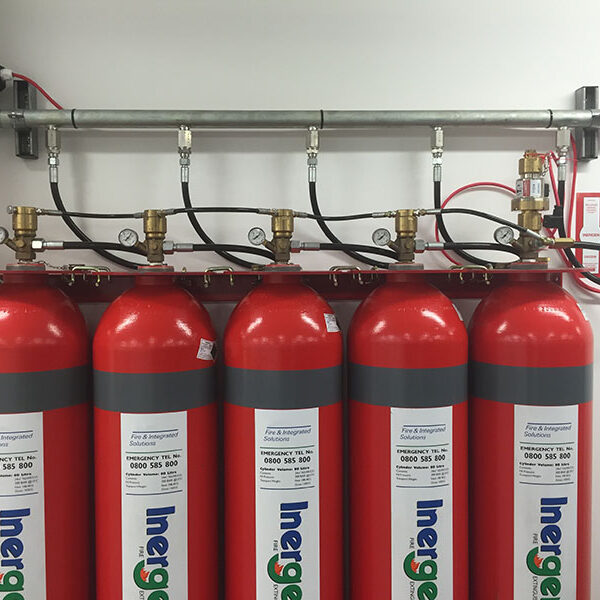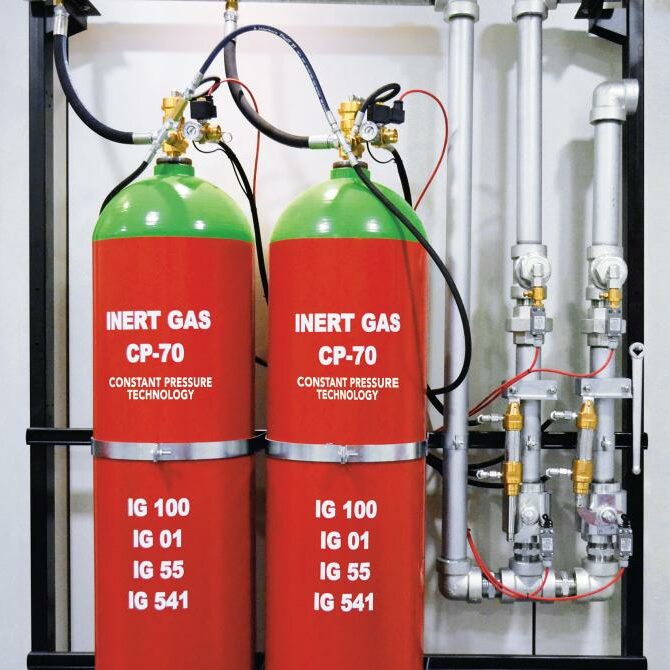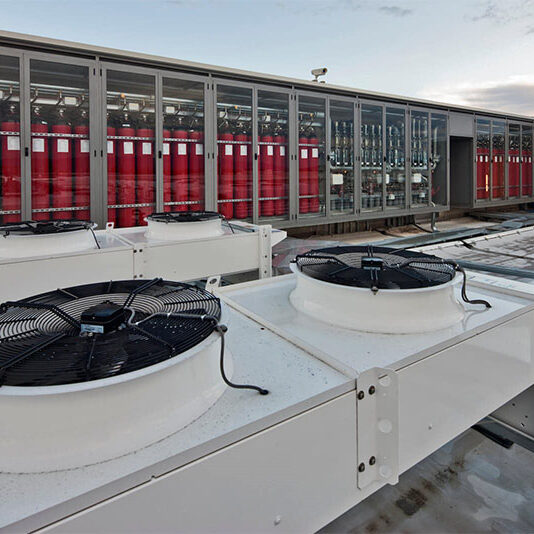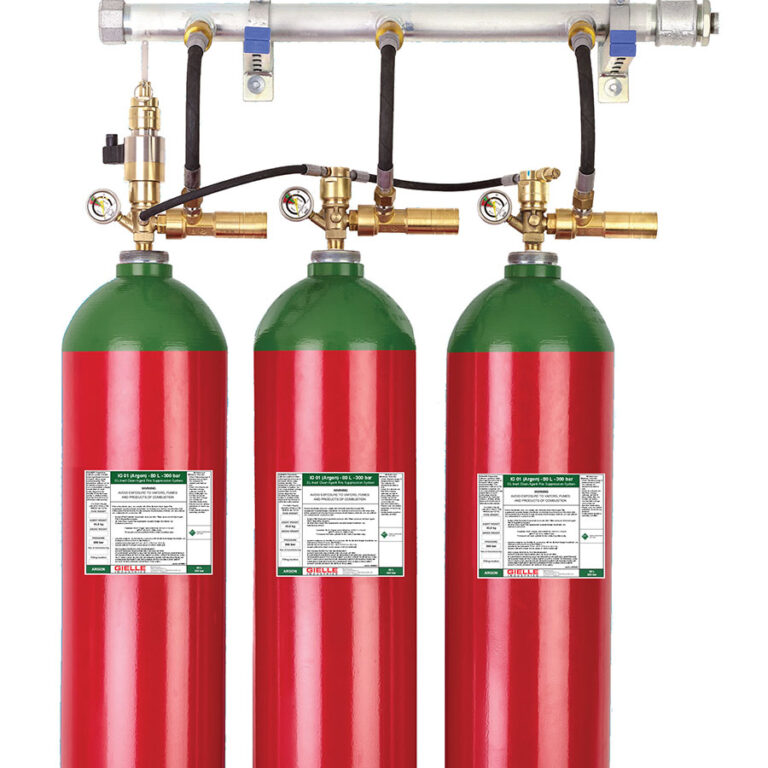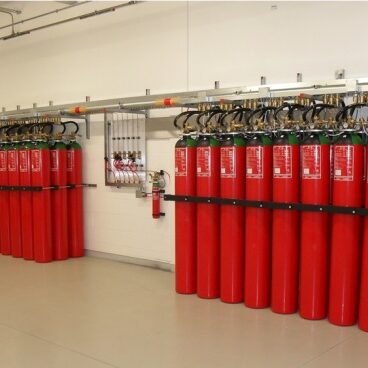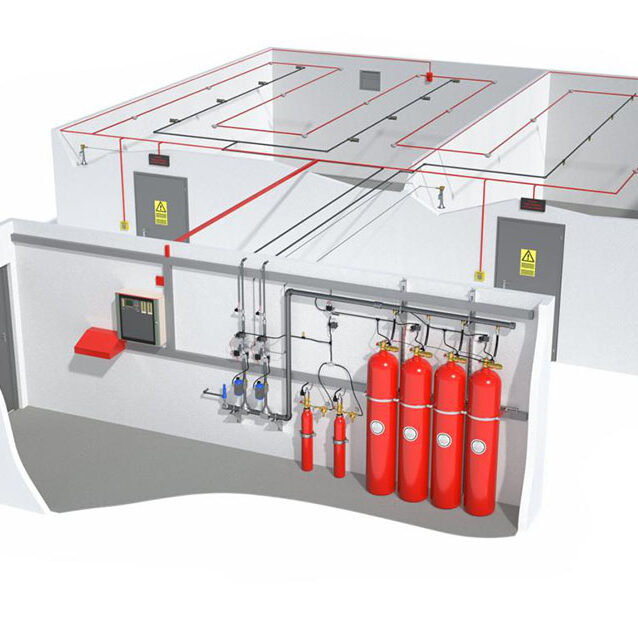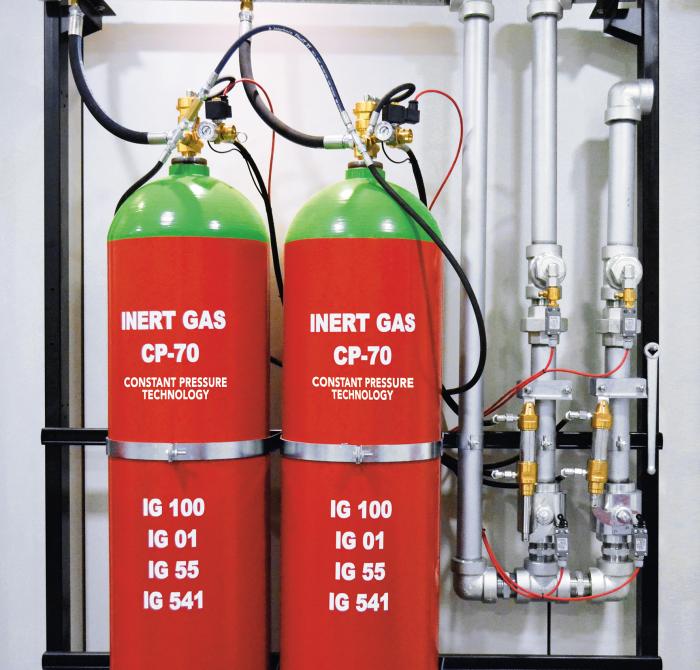Each system consists of one or more high pressure cylinders connected to a common manifold, with discharge valve, removable group, pressure switch, pressure gauge, pneumatic opening control and non-return valves. The high pressure hoses connect the discharge valve to an accumulation manifold and then continue with the distribution pipe of the extinguishing product in the environment to be protected. The sizing of the distribution network, the nozzles and their hole pattern are made using a computerized calculation in accordance with current regulations.
For a perfect functioning of the system, it is necessary that the design of the system is carried out correctly in order to have a uniform distribution of the gas in the environment and a reduction of oxygen which puts out the fire without causing damage to any persons/assets present.
The gas extinguishing system can be activated both manually and automatically. The extinguishing will take place through the total saturation method, it is therefore necessary to provide for the following measures to guarantee the permanence of the gas for the time necessary to extinguish the fire:
Close any fire dampers;
Close doors and windows;
Seal cable entry and exit openings.
In fact, in order for the system to be designed correctly and function effectively, it is important to take into consideration the characteristics of the environment to be protected, so much so that the NFPA regulation expressly provides for the seal test called Door Fan Integrity Test which consists in closing all the openings using automatic windows and especially the immediate shutdown of ventilation systems.
In particular small-sized environments where there are numerous more or less sealed openings, from where the extinguishing gas can quickly exit, the use of double discharge systems is frequent. After the first discharge, an additional “maintenance” discharge follows which adds the gas that is lost through the openings in order to maintain the concentration on the parameters required for extinguishing.
All our solutions comply with national regulations and have certifications. Our product development and manufacturing practices are regularly reviewed and scrutinized by external auditing firms around the world. This allows us to offer you unrivaled reliability.
ADVANTAGES OF INERT GAS EXTINGUISHING SYSTEMS
– inert gases are present in the atmosphere and therefore easily available on the market
– suitable for the protection of areas occupied by people
– are not electrically conductive
– they leave no residue after discharge
– no ozone depletion potential (odp zero)
– do not contribute to the increase in the greenhouse effect (gwp zero)
– they do not form dangerous decomposition products for people and for objects protected in contact with flames
– no “fog effect” during discharge
– low cost of the extinguishing agent
– zero environmental impact
– perfect for replacing 1301 halon systems
– does not contain bromine or chlorine
– safe for people
– the interruption of work activities after a possible discharge is reduced to a minimum
– does not cause damage to protected assets
– there are no constraints on real discharge tests of the plants
– the extinguishing agent is contained in 80 or 140 liter cylinders as compressed gas and can be placed far from the protected room and, with the use of switching valves, flexibility and convenience are guaranteed;
– the discharge does not generate fog and any decomposition products that are dangerous for people and protected property;
– it has low maintenance and recharging costs
APPLICATION ENVIRONMENTS:
Inert gases as extinguishing agents are particularly suitable for the protection of all environments where it is not possible to use water (CED rooms, archives, electrical substations, libraries, warehouses and technical areas with the presence of personnel).
The inert gas extinguishing systems allow to safeguard both the goods and the people who may be present, with maximum effectiveness and minimum risk.
In fact, the use of inert gas extinguishing systems allows the fire to be extinguished by removing its oxygen, avoiding the use of foam or water which could damage paper or electrical material.
Fixed systems with inert extinguishing agents provide clean fire protection for people, property and the environment. There are many other effective extinguishing systems that do not use gaseous extinguishing agents; they can damage what needs to be protected and are therefore unacceptable for many applications.
